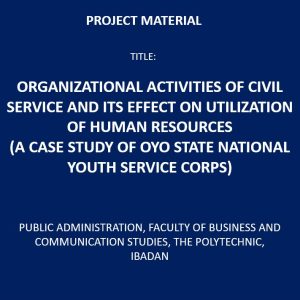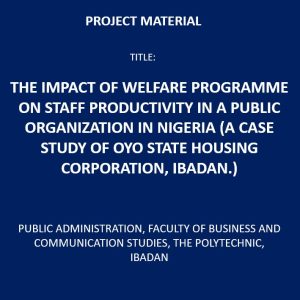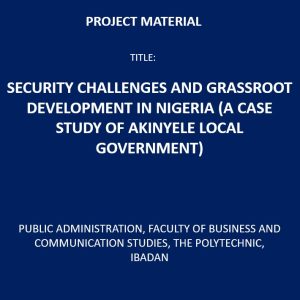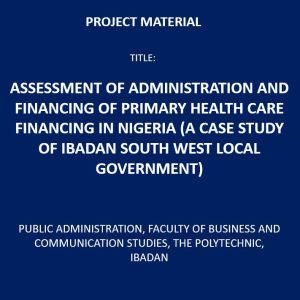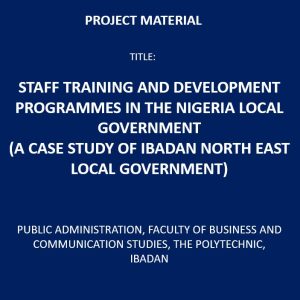No products in the cart.
Assessment of the Implementation of FADAMA Programme and Rural Development in Oyo State
₦10,150.00
ASSESSMENT OF THE IMPLEMENTATION OF FADAMA PROGRAMME AND RURAL DEVELOPMENT IN OYO STATE
- CASE STUDY: FARMERS ASSOCIATION, OYO STATE
- NUMBER OF PAGES: 45
- FILE TYPE: DOC
- DEGREE: HND
- DEPARTMENT: PUBLIC ADMINISTRATION, FACULTY OF BUSINESS AND COMMUNICATION STUDIES, THE POLYTECHNIC, IBADAN
Background to the Study
Agriculture plays an important role in Nigerian economic development through the provision of food, raw materials for agro-allied industries, employment generation, foreign exchange and source of income (Ani, 2014). The Federal Government of Nigeria attempted to reduce poverty and facilitate rural and agricultural development, therefore, introduced several rural and agricultural development programmes and projects decades ago till date. One of the programmes introduced was the National Fadama project, which is in phases. The latest phase is the Fadama III project. National Fadama Development Project (NFDP) is a rural and agricultural development project in Nigeria. The idea was conceived by the World Bank, African Development Bank and the Federal Government of Nigeria with active participation of the States and Local Governments (Sobanke, 2008). The National Fadama development project is a sustainable rural and agricultural development project with a wide spectrum targeted at dry season farnming, related agro-processing and marketing activities. This is to meet the food demand of the fast growing population of Nigerians, enhance land and water resources management (Nasiru, Tijani and Azeez, 2006).
Fadama refers to low lying land that is subject to seasonal flooding or water logging along the river banks, streams or depressions. It is a Hausa word meaning; the seasonally flooded or floodable plains along major savannah rivers with depressions adjacent to seasonally or perennially flowing streams and rivers. With favourable agro-environment and ecological conditions, Nigeria is endowed with underground and surface water reservoirs and low-lying plains with alluvial deposits called Fadama (Agbamu, 2008). The National Fadama III Development Project (NFDP III) is a follow up project on the success of the National Fadama II Development Project. The National Fadama III Development Project was implemented in all the 36 states of the Federation including the Federal Capital Territory (F.C.T) Abuja (Chima and Nwachukwu, 2007). It is funded by the International Development Agency (IDA). The broad objective of NFDP III is poverty reduction through increase in the income of the beneficiaries on sustainable basis. The specific objectives of the project were to reduce rural poverty, ensure food security and contribute to the achievement of the key Millennium Development Goal of food security (Oriola, 2009). NFDP III relies on the facilitation of demand driven investments and the empowerment of local community groups to improve farm and non-farm productivity and land quality. Over 70% of
Nigerian population aside and earn their living in rural areas. Majority of these ruralities are actively involved in agriculture and agriculture related enterprises especially women, youths and children(Yahaya,2000).Therefore, to improve the state of the farming industry in the country, the Nigerian government has created the FADAMA project way back in 1993.As of 2017,the National FADAMA Development Office(N.F.D.O) is in the process of implementation FADAMA III, the third inflammation of this initiative. The primary goal of this project is to assess the impact of FADAMA programme and rural development in Oyo State


